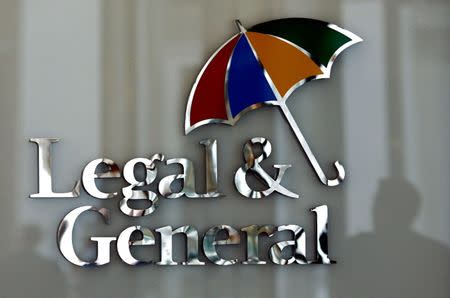BoE says EU insurance rules need tweaks rather than overhaul
By Huw Jones LONDON (Reuters) - EU capital rules for insurers need some tweaks but are not a deterrent to investment in infrastructure as some insurers' claim, the Bank of England said on Wednesday. Officials from Aviva and Legal & General , two of Britain's biggest insurers told the British parliament's Treasury Select Committee last month that the EU Solvency II insurance capital law had made it costly to invest in infrastructure, a committee member said. But Sam Woods, chief executive of the BoE's Prudential Regulation Authority (PRA), told the same committee on Wednesday that the law, introduced in January last year, was basically a sensible regime. A lack of attractive projects was the main reason for insurers' low investment in infrastructure, he said. "I am not a cheerleader for Solvency II ... There are some bugs that need to be ironed out," Woods said, adding that insurers were exaggerating the problems. "They are overdoing it. They are giving the impression that Solvency II discourages long-term investment. At the margin, we could make it a bit better." The PRA supervises banks and insurers. Britain is keen to see more investment in infrastructure to lift economic growth and productivity. Insurers' business plans show that infrastructure investments are set to rise in coming years, but insurance executives say it is difficult to find infrastructure assets at a suitable price, Woods said. The biggest bug in Solvency II was the "risk margin" element, he said. The margin is a type of capital add-on to help attract a "white knight" to take on the insurer's books if it runs into trouble, providing an extra layer of protection for policyholders. Woods said it was forcing life insurers to hold more capital than they need, though transitional arrangements under the EU rules provided temporary relief until changes are made. "It's overcooked. It's fundamentally flawed and needs to be fixed," he said. Woods said the PRA had turned down an industry "quick fix" in favour of trying to persuade the EU to change the Solvency II law in a review next year - a sign of how Britain is expected to continue applying a version of Solvency II after it leaves the bloc in 2019. As allowed under the EU rules, the PRA has granted the sector so-called "matching adjustment" capital relief worth 59 billion pounds ($73 billion) to ease the impact of the EU rules on infrastructure investments, Woods said. The industry has said that complying with Solvency II costs 200 million-250 million pounds annually, and Woods said some reporting requirements could be eased to cut costs. "We need a decent amount of data to do the job. If we go all generalist ... it would be a disaster," Woods said. (Reporting by Huw Jones; Editing by Susan Fenton)

 Yahoo News
Yahoo News 


